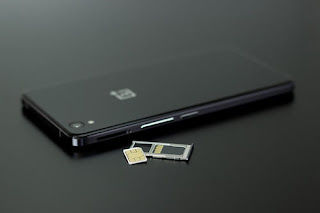Technical Review
#MAKAUT
#MARPOINTS
#TMSL
#TECHNICAL_REVIEW
By - Hrishikesh Mishra
CSE -1ST YEAR
.
Technical Review on "E-SIM"
.
What is an eSIM?
An eSIM is exactly what it sounds like: An electronic, or embedded, SIM. Instead of a physical card, SIM technology is built right into your phone. It’s a small chip that’s used to authenticate your identity with your carrier.
Of course, you probably have some questions about that. When traveling with a traditional SIM card, you may have to swap to another carrier’s SIM card to keep your coverage. If you want to change carriers at home, you’ll also have to physically replace your SIM card. With that in mind, does a built-in SIM mean you have to switch phones? Thankfully, no. In fact, one of the advantages of eSIM technology is that it makes it much easier to switch carriers. Instead of having to order a new SIM and wait around for it to arrive, you can switch to a new carrier straight from your phone. If you’re a dual-SIM user, eSIM technology supports multiple accounts — and switching between them is super easy.
With an eSIM, your phone has a few new settings devoted to your SIM card that allow you to switch between lines and carriers and manage accounts. The Google Pixel 2 was among the first phones to support eSIM technology, and an app for managing your eSIM is available from the Google Play Store. Then, the iPhone XS came out, and it offered both a physical SIM card and an eSIM as a secondary, though the eSIM was only enabled later down the line through an iOS software update. Unfortunately, the Chinese version of the iPhone does away with the eSIM altogether — instead offering a dual-SIM slot. That could suggest that Chinese carriers are less interested in adopting the new tech, which is bad news for those that were looking forward to using an eSIM to travel to China.
The eSIM is helpful for another reason: It helps make devices smaller. Now, that may not matter all that much for phones (although a little extra room for battery capacity is always nice), but it could be extremely helpful for wearables. The Apple Watch Series 5 and Series 4 already have eSIMs, and that helps Apple keep the overall size down, which is vital for something you wear on your wrist.
When can I start using an eSIM?
It may be a while before the full potential of the eSIM is realized, but you can take advantage now with the right phone and service. Some handset manufacturers, like Apple and Google, have adopted eSIM tech, and many major carriers around the world support eSIM service already. In the U.S., for example, you’ll find eSIM support at AT&T, T-Mobile, Verizon, and Truphone.
Going forward it’s likely that eSIMs will find a home in a new generation of LTE-connected computers. Those computers are just now starting to come out — but expect to see a lot more of them in the next few years.
Slowly but surely, eSIMs will take over. If your carrier supports it, and your phone supports it, then that may be all you need to start using the new technology today. To help bridge the gap, some phones with eSIMs still have traditional SIM card slots, but eventually, those trays could go away altogether.



This comment has been removed by a blog administrator.
ReplyDelete